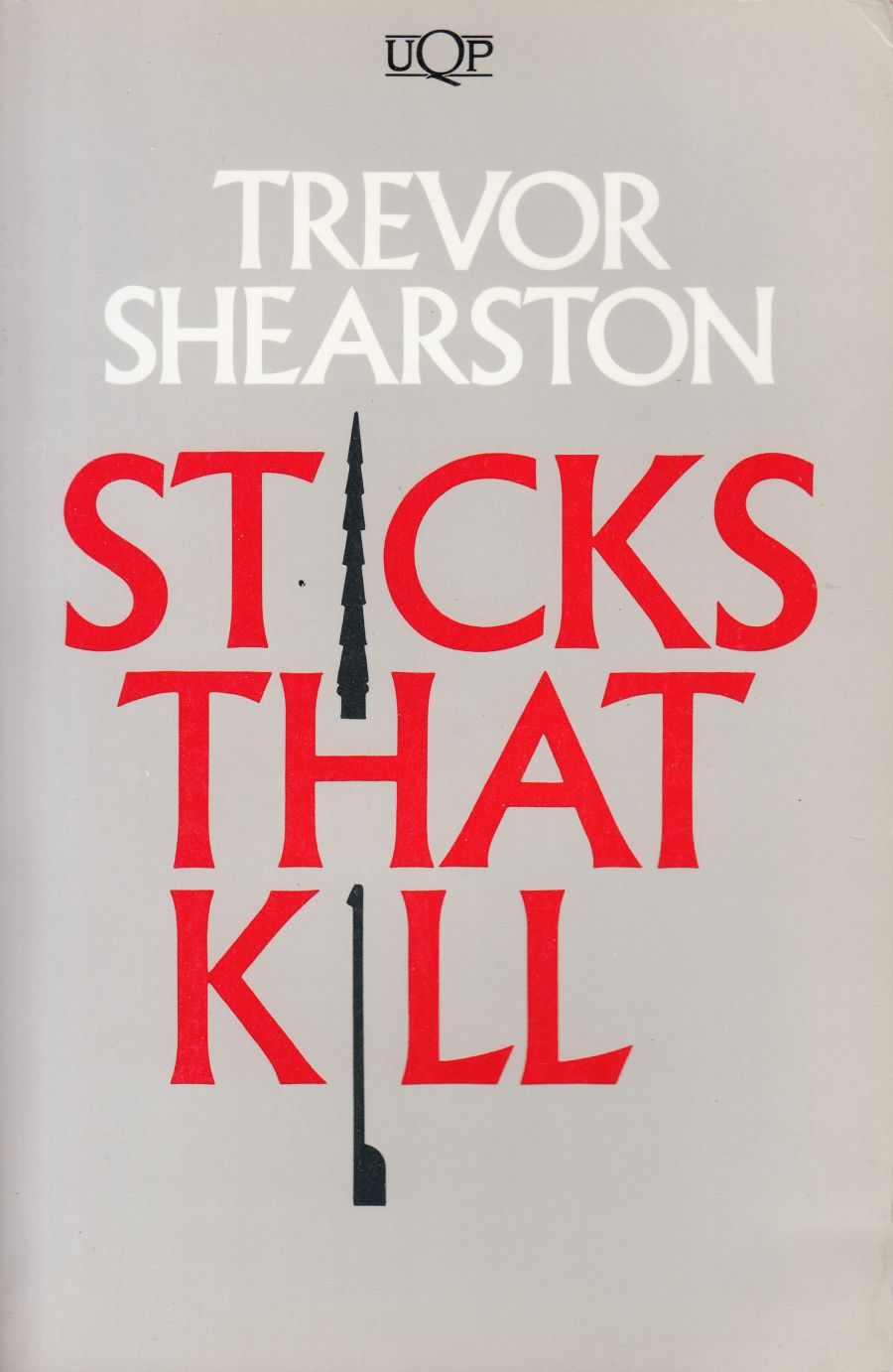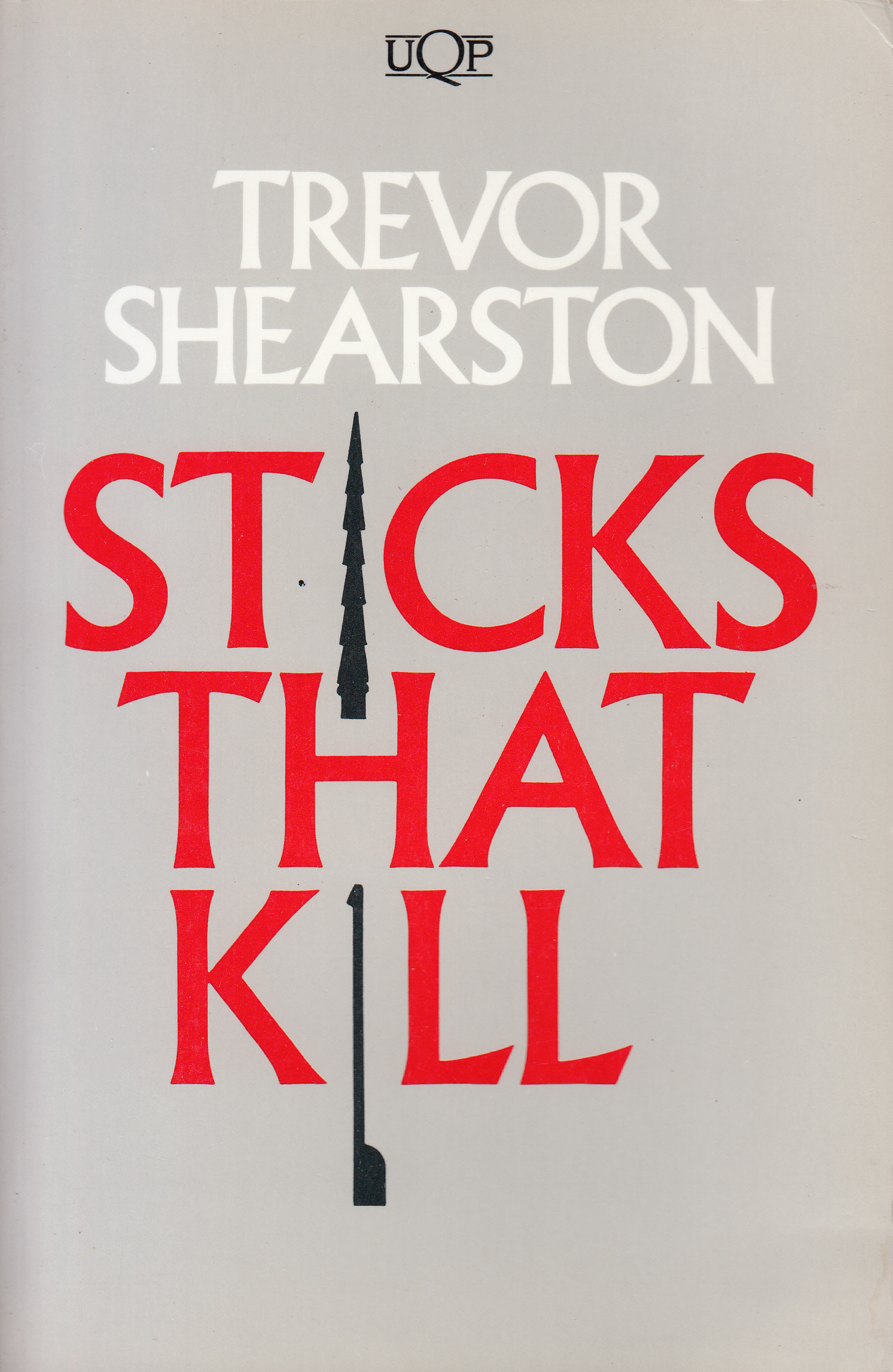
- Free Article: No
- Contents Category: History
- Review Article: Yes
- Article Title: Colonial Downfalls
- Online Only: No
- Custom Highlight Text:
On April 8 1901 the LMS missionary James Chalmers was eaten by Goaribari villagers in the Gulf of Papua. The cannibalistic nature of Holy Communion notwithstanding, the Christian administrators of British New Guinea conducted several punitive raids against the offending gourmets during the next three years. In consequence there were a lot of people killed by arrows and guns, a Royal Commission of Inquiry, and a suicide. The suicide was that of Judge Christopher Robinson, the first Australian to act as Administrator in New Guinea. With a revolver he blew his brains out at the base of the government flagpole in Port Moresby on June 20 1904.
- Book 1 Title: Sticks That Kill
- Book 1 Biblio: UQP, $14.95 pb, 594 pp
- Book 1 Cover Small (400 x 600):

- Book 1 Cover (800 x 1200):

In the novel Sticks That Kill Trevor Shearston stays faithfully close to ‘complete’. The huge horned Beast is the Houdin, a dust-eater with hands, maintaining in its clouded intellect an almost as dire as those proclaimed for black people killing whites. What Shearston refers to as ‘the Queensland disease’ reached epidemic proportions in the Goaribari massacres. Judge Tyson’s blood-letting was the necessary cure.
One of Shearston’s achievements lies in his convincing portrayal of the early colonial officials as both powerful and ordinary men. For example, an image which attaches itself to the character of Judge Tyson earlier in the book remains with him through all the international power-play and his own consequent tragedy. On patrol in the Northern Division, taking British law to uncontacted jungle villages, Judge Tyson
had reached into his trousers to scratch a faint tickling beside his testicles and, to his horror, closed his fingers on the cold fatness of a leech half-buried in the folds of his scrotum; it had required all the will-power he possessed not to scream.
It is this sort of detail that allows Shearston to convince dramatically in his themes concerning the challenge New Guinea threw out to those old myths of white superiority.
The impatient reader will have to get through 200 pages before much appears to be happening in Sticks That Kill. However, the long conversations in the book’s first third provide the right foundation for the startling events of the last hundred pages. In the white men’s alternately feverish and phlegmatic discussions plotting the future of New Guinea there lay unrecognised many of the seeds of their own and the country’s tragedies. In the planning and ideas of the administrators, whether half-cocked or high-minded, there ran inexorably the undercurrents of colonial disasters. Finally the novel arrives at Judge Tyson’s death. It provides heartstopping reading. As a touring circus troupe performs on the deck of a visiting ship before an audience in canoes and boats drawn up alongside on Port Moresby harbour. Judge Tyson contemplates suicide beside the Empire’s flagpole. Then follows Tyson’s funeral: it develops into a brawl which leaves an LMS missionary punched to the ground. Everything fits together in the end. It is precisely that ‘weird compound of comic opera and tragedy’ with which C.A.W. Monckton characterised early colonial events in New Guinea.


Comments powered by CComment